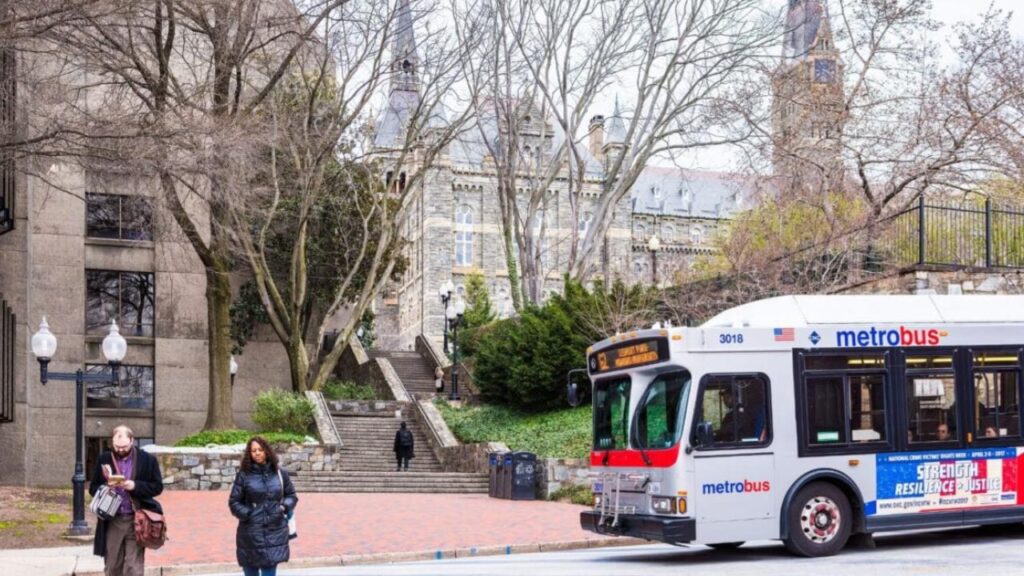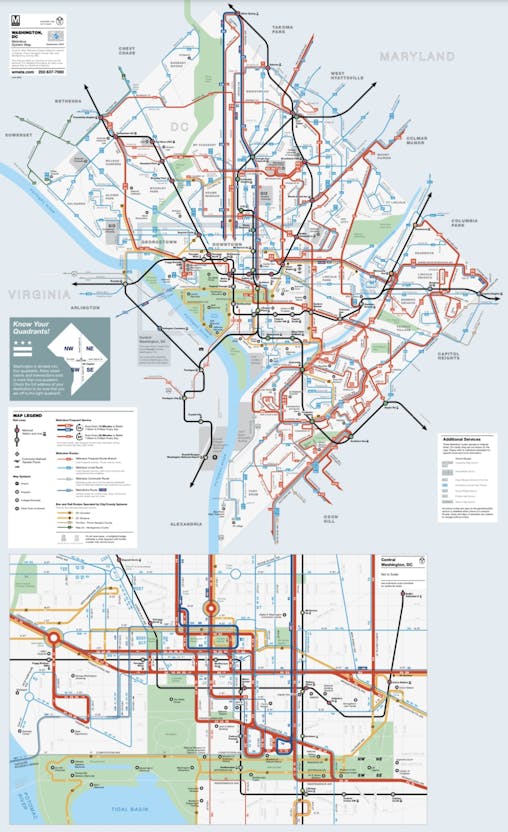Washington D.C.’s Metrobus is getting its first massive overhaul in 50 years, with sweeping route changes, renamed lines, and service improvements rolling out June 29, 2025. Riders can expect fewer stops, better connections, and a much smarter, easier-to-navigate bus system. As someone who’s navigated the quirks of the H8 and 16 routes for years, I can say: this update feels like a long-overdue reset.

Washington D.C.’s Metrobus Is Getting Its First Massive Overhaul
| Takeaway | Stat or Fact |
|---|---|
| Historic redesign | First full overhaul in ~50 years |
| Route rename + renumber | All routes get letter-number names tied to region |
| 500+ stops cut | 527 stops removed to speed travel |
Washington D.C.’s Metrobus is stepping into the future with a major network overhaul on June 29, its first in 50 years. With intuitive route names, faster service, fewer stops, and better regional coordination, this is more than a facelift—it’s a transformation aimed at building a faster, smarter, and more equitable public transit system.
What’s Changing & Why It Matters
1. Network-Wide Renaming
Every Metrobus line is getting a new letter-number combo. For example, routes that serve downtown will now start with “D,” while those in Prince George’s County will begin with “P.” The overhaul ditches decades of confusing numbering and helps riders understand where a bus goes just by looking at its label.
2. Eliminating 527 Bus Stops
One of the biggest shifts: WMATA is trimming 527 underused stops, many of which are just a short walk from another. It might mean a few extra steps for some riders, but in return, buses will run faster and more reliably.
3. More Crosstown Routes
Two new key routes include:
- D74: Runs between Foggy Bottom and Brookland via Dupont and Columbia Heights.
- P90: Connects Old Town Alexandria with National Harbor and Suitland.
These changes aim to reduce the need for Metro rail transfers and serve neighborhoods previously underconnected by bus.
4. Smarter Schedules
Expect better frequency and late-night options. Some high-ridership lines will now run every 12 to 20 minutes—and even operate 24/7. This is a lifeline for late-shift workers and weekend riders who’ve long been underserved.
5. Regional Coordination
Prince George’s County’s TheBus network is also getting a makeover starting June 30, synced with Metrobus’s revamp. Montgomery County’s Ride On system is next in line for changes under its “Ride On Reimagined” plan. This is all part of a more unified approach to transit in the region.

The Good and the Not-So-Good
Pros:
- Faster travel due to fewer stops and direct routes
- Easier to understand with intuitive route labels
- No need for massive new infrastructure
Cons:
- Some longer walks to get to a stop
- Transfers may be more frequent on simplified lines
For regular commuters, especially those of us tired of routes that meander or loop unnecessarily, these tweaks are more than welcome.
What You Should Do Now
- Check the new map: WMATA has full route profiles and an interactive trip planner.
- Know your new route code: Familiarize yourself with the new naming system.
- Update your commute plan: Google Maps and WMATA apps are already updated.
- Stay involved: WMATA used rider input to shape this overhaul and continues to take feedback.
FAQs
How many stops are being removed?
A total of 527 stops will be eliminated to reduce redundancy and speed up service.
When does the new system go live?
The updated Metrobus network launches Sunday, June 29, 2025.
Are other transit systems changing too?
Yes. TheBus in Prince George’s County relaunches June 30, and Montgomery County’s Ride On redesign is also underway.






